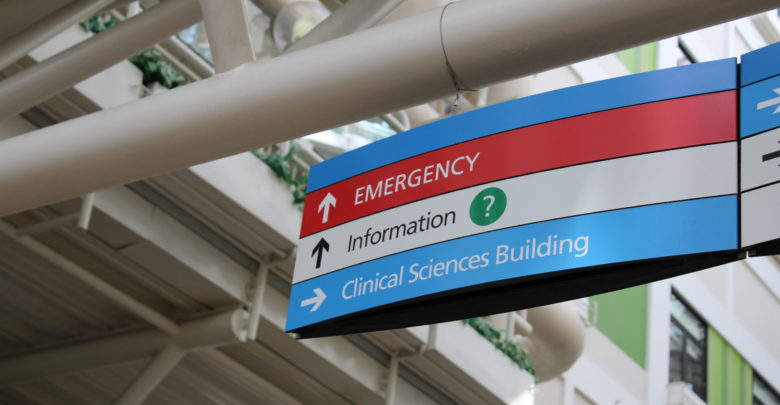 Amanda Sparks
Amanda SparksA research team at the University of Alberta has developed a portable arm ultrasound device to make quicker diagnoses and improve emergency room wait times.
Abhilash Hareendranathan is an associate professor of radiology and diagnostic imaging at the U of A. He is also part of the team that developed the portable Ultrasound Arm Injury Detection tool. Recently, Alberta Innovates awarded the team $748,500 to develop and test this device.
The purpose of the portable ultrasound device is for medical professionals to “take the technology to the patient,” according to Hareendranathan. He said they are the size of a smartphone or tablet, making them more portable than full-sized ultrasound machines.
“That’s the ultimate motivation behind working on these point-of-care ultrasound devices,” Hareendranathan explained.
Ultrasounds are currently “underused” because they are difficult to perform and interpret, Hareendranathan said. Additionally, not enough people have the training to perform ultrasounds. The portable ultrasound device uses artificial intelligence (AI) “as an enabler,” making it easy for people with less training to perform ultrasound scans, Hareendranathan said.
The device uses AI to confirm the accuracy of the scan and detect fractures. This AI technology provides immediate feedback, which Hareendranathan said is a “huge affirmation” for health-care workers.
“It’s a win-win for both the patient and the health-care system,” Hareendranathan said
Hareendranathan and his team hope that this device will decrease emergency room wait times across the province, which are a “big pain point” for both patients and health-care providers, he said.
Currently, when a patient goes to an emergency room with an injury, they see the triage nurse, who places them on a wait list. Then they wait to receive an X-ray and see a doctor. Instead, Hareendranathan is proposing giving triage nurses the ultrasound device to perform examinations on the spot.
“Something that takes a few hours to come up with an actionable diagnosis can now be done in a [matter] of minutes,” he said. “It’s a win-win for both the patient and for the health-care system.”
This is beneficial in terms of both resources and finances, he added. Portable arm ultrasound devices are significantly more cost effective than what is currently being used, according to Hareendranathan.
As well, “if this can be performed in a primary care clinic, then the patient does not have to wait for a specific medical centre to perform this ultrasound examination,” Hareendranathan said.
Portable ultrasounds are the “21st century stethoscope,” Hareendranathan says
Hareendranathan’s goal is for every medical professional to have one of these devices. He sees the portable ultrasound as the “21st century stethoscope.”
“It can be used in primary care settings, family clinics, and emergency departments. Long-term, our vision is to have this as part of the routine examination package,” he said.
“Broader uptake of point-of-care ultrasound [devices] is necessary to revitalize the health-care system. Both in terms of faster action and also reducing costs.”




